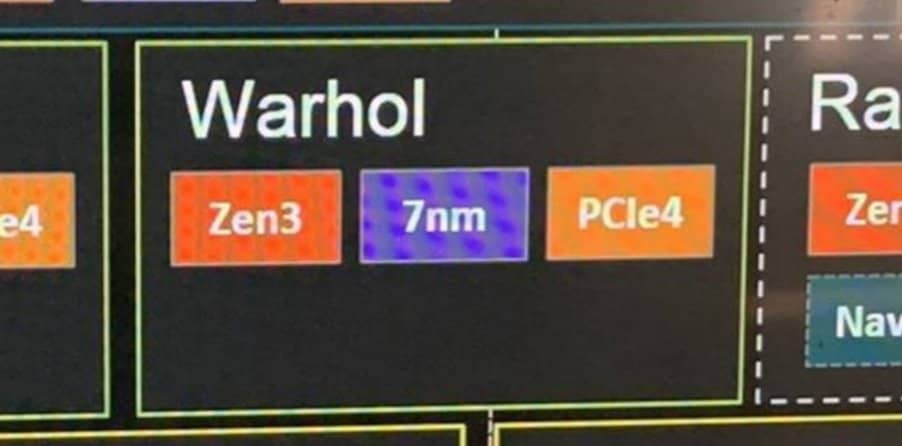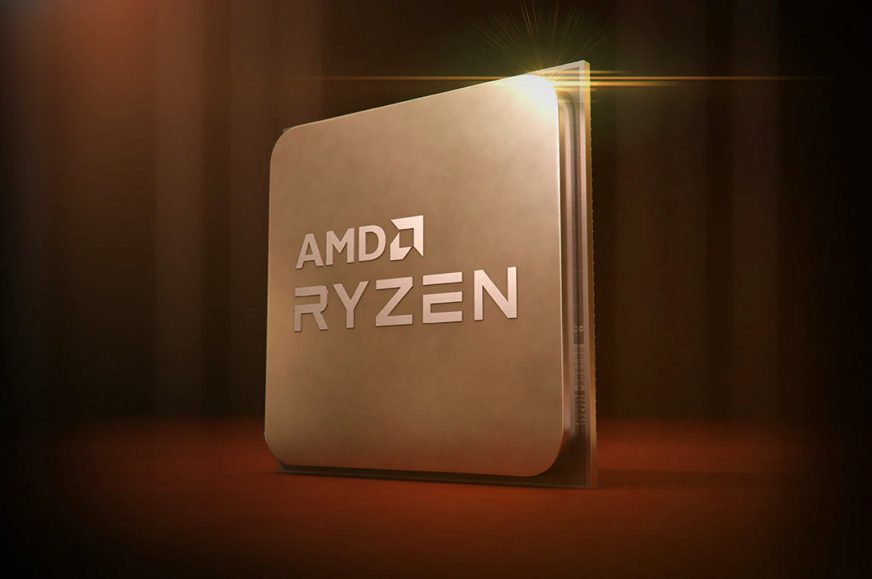AMD is preparing new Ryzen 5000 models. Stepping B2 will raise the clock speed to the magical 5 GHz
Refresh of Ryzen 5000 desktop processors with Zen 3 architecture seems to be approaching. Vermeer chips, on which the current Ryzen 5000X models are based, have now appeared with a brand new B2 stepping. AMD might use refreshed CPU models as a response to Intel releasing the Rocket Lake 11th generation Core desktop processors. Chips with the B2 stepping seem to achieve higher clock speed, so they could finally reach 5 GHz officially.
The news comes from a leaker called Patrick Schur, who has posted on Twitter about two samples of Ryzen processors with a B2 stepping Vermeer chip. Schur has already proven that he has access to internal data on future AMD processors, so he should be considered a trusted source. However, he does not say whether he’s found these B2 samples in some internal documents or whether he had already seen samples of these chips.
So far, Schur has mentioned two samples. The first CPU labelled 100-000000059-60_50/34_Y is the more interesting one. It is said to have 16 cores with a base clock speed of 3.4 GHz, which is the same as with Ryzen 9 5950X. But there would be a slight upgrade in single-threaded performance, as the maximum boost is supposed to increase from 4.9 GHz to 5.0 GHz.
This is quite reminiscent of what the refresh of the Matisse chips, i.e. Ryzen 3000 XT, looked like last year. It is therefore possible that AMD will proceed similarly and this processor could come out as Ryzen 9 5950XT, standing above today’s top Ryzen 9 5950X (it’s hard to say now whether its price will go down because of that new SKU, though).
The second processor is labelled as 100-000000065-06_46/37_Y and looks less interesting. It is a hexa-core with a 3.7 GHz base clock and a 4.6 GHz max boost, which, however, are exactly the values already featured on the existing Ryzen 5 5600X, with no increases. So it’s questionable whether this would also be an XT model.
B2 Stepping for Vermeer?! ?
100-000000059-60_50/34_Y
3.4 GHz (up to 5 GHz)
Stepping: B2
Cores: 16100-000000065-06_46/37_Y
3.7 GHz (up to 4.6 GHz)
Stepping: B2
Cores: 6— Patrick Schur (@patrickschur_) May 17, 2021
We should add that the boost values that are written in processors’ official specs are not real maximum clocks in the case of current Ryzen CPUs. In fact, the Ryzen 9 5900X and 5950X can reach a maximum that is up to 150 MHz higher than on paper in a single-threaded boost. So although the Ryzen 9 5950X officially has a maximum of 4.9 GHz, its boost can actually drive it up to 5050 MHz, although this might only happen for short moments in less demanding programs and not on all chips and motherboards.
Unfortunately, the specifications of these samples don’t say whether this invisible limit will advance and whether, for example, the Ryzen 9 5950XT could in some cases go up to 5150 MHz (or even just 5100 MHz). If not, then what AMD could in theory do is to not actually change the real maximum at all and just codify the previously unreported shadow range of boost clock in the official specifications. On the contrary, if the invisible real maximum rises too, then even the Ryzen 5 5600XT could eventually have a higher possible boost, it just wouldn’t be written anywhere on paper.

Is this Warhol?
It is still unclear whether such Ryzen 5000 “XT” processors are the product that appeared in the leaked roadmap as “Warhol” processors, or whether that was supposed to be a more significant refresh with major changes. According to reports from Schur, there are actually no internal documents that mention Warhol at all, so it is possible that AMD has cancelled it by now, or this codename has ceased to be used since the roadmap leak happened (the Ryzen 3000XT didn’t have a codename of its own, either). Anyway, these processors should still be compatible with current motherboards and the AM4 socket.
Read more: Gigabyte is preparing motherboards with the AMD X570S chipset: fanless version of the X570?
In any case, if this year’s desktop processor refresh only involves these Ryzen 5000 “XT” models, then be prepared to find that they likely won’t bring much performance boost. As the unchanged base clock values show, the overall multi-threaded performance would likely not increase at all and only a slightly better single-threaded performance could be in the cards, and perhaps cosmetically better results in games thanks to that. However, if the increase is only 100 MHz, then the ST performance can clearly only improve by a maximum of 2%. If so, it would be very much similar to last year and that the XT models, which will likely have higher prices, will not be particularly worth buying with the original X-models (5600X, 5800X, 5900X) remaining the optimal choice due to singificantly lower prices.
However, things would be different if stepping B2 hypothetically corrected some bugs that caused Zen 3 to have a slightly reduced performance in its first version, and now this loss would be reveresd, resulting in the processor performance per 1 MHz (a.k.a. IPC) improving. But this is very unlikely. With Zen+ (Ryzen 2000), there was a few % improvement in IPC, but that was thanks to AMD fixing an issue in the initial stepping, due to which the original Zen CPUs had an L2 cache latency of 17 cycles instead of the planned goal of 12, which was met by by Zen+ later. But we don’t know about anything such regarding the Zen 3 core, so we don’t expect the IPC to change, currently.
To be unveiled at Computex?
AMD might announce plans for these CPUs in around two weeks at Computex, which is a natural stage for similar announcements of upcoming news from tech companies – in addition to the new Ryzen processor models, these could involve the Radeon RX 6600 and RX 6600 XT or motherboards with the X570S chipset, which should finally use fanless cooling.
Updated:
The situation with stepping B2 has become unclear and it no longer seems so certain that it will really be used to release XT models with increased clock speed (although this is probably still not ruled out either). AMD has provided some websites like Benchmark.pl or Tom’s Hardware with a statement clarifying the B2 stepping should not bring any functional or performance improvements. The B2 stepping also does not require a BIOS update on the motherboards, it will automatically work everywhere where the original Ryzen 5000 is supported.
AMD also states that in the next six months, all Ryzen 5000 models, including the X models, should switch to this version of the chip. What the B2 stepping improves (i.e. why it is being introduced into production) is not clear from the statement. In theory, it might be easier to achieve higher clock speed with it even if AMD would not release any XT models (basically it would make it easier to produce the higher 5900X and 5950X models, as a larger proportion of silicon would meet the required specifications).
„In continuous efforts to enhance our manufacturing and logistics capabilities, AMD is gradually transitioning the AMD Ryzen 5000 Series desktop processors to a ‘B2’ revision over the next 6 months. There are no feature, function, or performance enhancements to the B2 revision, and no BIOS update is required.“ — AMD
Source: Patrick Schur
Translated, original text by:
Jan Olšan, editor for Cnews.cz
- Contents
- AMD is preparing new Ryzen 5000 models. Stepping B2 will raise the clock speed to the magical 5 GHz












